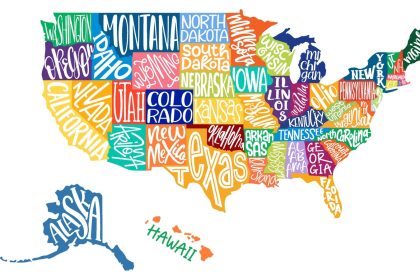Each year, you can make a tax-free charitable gift from your IRA or certain other pre-tax retirement account. This is known as a qualified charitable distribution or a QCD. These distributions allow you to meet your annual required minimum distribution without paying taxes on that amount. To do so, you must transfer the assets from your IRA to the charity directly. The amount you can give each year is capped, and in 2024 the limit is $105,000. Here’s what you need to know.
A financial advisor can help you find tax-efficient ways to support favorite causes.
What Is a Qualified Charitable Distribution?
For individuals age 70 1/2 or older, the IRS allows a form of charitable giving called “qualified charitable distributions.” This gift is a transfer from a pre-tax retirement account that you own, such as an IRA or a 401(k), to an eligible charity (according to the IRS) of your choice. Eligible gifts are then treated as tax-free transfers, meaning that you do not include the value of this gift in your annual taxable income.
Eligible gifts also apply toward your required minimum distributions for the year. The result is that individuals who do not need the withdrawal can use qualified charitable distributions to take their required minimum distribution tax-free.
To make a QCD, you must use a tax advantaged retirement account. In most cases this means a pre-tax account, and all forms of pre-tax IRA allow this type of giving. Under some circumstances you can also use a Roth IRA, but this is unusual. You must meet the age requirements for QCDs, and the recipient must be a legally qualified charity. Finally, you must transfer the assets directly from the IRA to the charity in question. The IRS will not consider this an eligible distribution if you transfer the assets to yourself and then gift them in turn.
A QCD applies to your taxes in the tax year that the gift is received. Given the requirement that you must make the transfer directly, in most cases the giving and receiving should be contemporaneous.
You can use any form of transfer to make a QCD. This includes direct electronic transfers or checks made payable to the charity, so long as this transfer draws directly on the IRA account. You can transfer cash or securities, based on the preferences of the recipient. The charity must provide you with a receipt or other written confirmation of the gift, and you cannot receive anything in return (like tickets to a charity event).
Why Make a Qualified Charitable Distribution?

A qualified charitable distribution has two key advantages. First, an eligible transfer is entirely tax-free. You do not count it as part of that year’s taxable income.
Second, a qualified charitable distribution counts towards your required minimum distribution for the year. For example, say that you have a $7,500 RMD for 2024. If you donate $10,000 to charity directly from your IRA, you will have met the required minimum distribution for the year. This allows you to take your RMD tax-free while giving to charity at the same time.
However, excess qualified charitable distributions do not roll over from year to year. In the case above, for example, you would not receive a $2,500 credit toward 2025’s required minimum distributions.
You can give tax-free each year up to the QCD cap. In recent years, this has been set at $100,000. However, effective as of 2024, this cap will be indexed upward each year. For tax year 2024, each individual can give up to $105,000 from their pre-tax retirement account tax-free. Married couples filing jointly can combine this for up to $210,000 in giving.
This is not a tax strategy that will benefit households that need the withdrawals from their IRAs. It requires you to make a unilateral gift, which means that you will almost always give away more money than you save in taxes. However for households interested in philanthropy, it’s an excellent way to engage, while also reducing the tax impact of their required minimum distributions.
Bottom Line

Qualified charitable deductions, or “QCDs,” are a way to give money tax-free from your pre-tax retirement account. As long as you follow the rules, you can give away up to $105,000 to eligible charities without including that money in your taxable income.
Tips for Charitable Tax Deductions
- A financial advisor specializing in taxes can help maximize your return. Finding a financial advisor doesn’t have to be hard. SmartAsset’s free tool matches you with up to three vetted financial advisors who serve your area, and you can have a free introductory call with your advisor matches to decide which one you feel is right for you. If you’re ready to find an advisor who can help you achieve your financial goals, get started now.
- While giving cash is a straightforward way of making a donation, other assets are donatable as well. Consider donating real estate if you’re strapped but still want to make a difference.
Photo credit: ©iStock.com/BongkarnThanyakij, ©iStock.com/dragana991, ©iStock.com/Nikola Ilic
Read the full article here

















